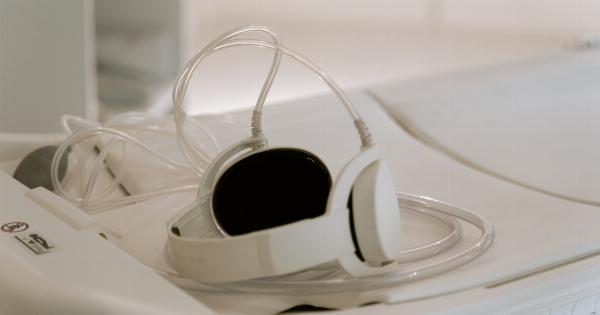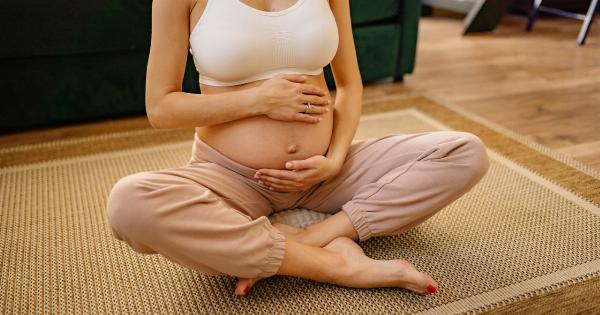Pregnancy is an incredible journey filled with many changes and experiences. As a pregnant woman, it is essential to stay informed about the various aspects of pregnancy, including uterine contractions.
Uterine contractions are a natural part of the labor and delivery process, and understanding them can help you navigate through your pregnancy with confidence and ease. In this article, we will discuss everything you need to know about uterine contractions during pregnancy.
1. What are uterine contractions?
Uterine contractions are the tightening and relaxing of the muscles in the uterus. These contractions play a vital role in moving the baby down the birth canal during labor.
The strength, frequency, and duration of uterine contractions increase as the pregnancy progresses.
2. Types of uterine contractions
There are two main types of uterine contractions: Braxton Hicks contractions and labor contractions.
Braxton Hicks contractions: Also known as “practice contractions,” Braxton Hicks contractions are irregular and typically painless contractions that begin around the second trimester.
These contractions are the body’s way of preparing for labor and are often described as a tightening or squeezing sensation in the abdomen. Unlike labor contractions, Braxton Hicks contractions do not significantly increase in frequency, duration, or intensity.
Labor contractions: Labor contractions are the contractions that occur during active labor, signaling the onset of childbirth. These contractions are more regular, frequent, and intense than Braxton Hicks contractions.
Labor contractions cause the cervix to dilate and efface to allow the baby to pass through the birth canal.
3. How to differentiate between Braxton Hicks contractions and labor contractions?
Distinguishing between Braxton Hicks contractions and labor contractions can be challenging, especially for first-time mothers. However, some key differences can help you identify which type of contraction you are experiencing:.
Timing: Braxton Hicks contractions are usually irregular and do not follow a consistent pattern, while labor contractions become progressively closer together.
Pain intensity: Braxton Hicks contractions are typically painless or mildly uncomfortable, whereas labor contractions are more intense and increase in intensity over time.
Location of pain: Braxton Hicks contractions are usually felt in the front of the abdomen, while labor contractions often radiate to the lower back and pelvis.
4. The role of uterine contractions in labor
Uterine contractions during labor serve several important purposes:.
Cervical dilation: Uterine contractions help to soften and thin the cervix, allowing it to dilate and open for the baby to pass through.
Effacement: Along with cervical dilation, uterine contractions also contribute to the effacement of the cervix. Effacement refers to the thinning of the cervix as it prepares for childbirth.
Pushing the baby: The powerful contractions during the second stage of labor help push the baby through the birth canal and into the outside world.
5. Managing and coping with uterine contractions
While uterine contractions are necessary for labor and childbirth, they can be intense and uncomfortable. Here are some tips to help manage and cope with uterine contractions:.
Practice relaxation techniques: Deep breathing, visualization, and relaxation exercises can help reduce tension and promote relaxation during contractions.
Change positions: Experimenting with different positions, such as sitting, standing, kneeling, or walking, can help relieve discomfort and encourage progress during labor.
Massage and counter-pressure: Applying gentle pressure on the lower back or abdomen can provide relief during contractions. A massage or the use of warm compresses can also help soothe discomfort.
Hydration and nutrition: Staying hydrated and maintaining a balanced diet during labor can provide you with the energy needed to cope with contractions and facilitate a smoother labor process.
6. When to contact your healthcare provider
While uterine contractions are a normal part of pregnancy and labor, there are certain situations where contacting your healthcare provider is necessary:.
Premature labor: If you experience regular contractions before 37 weeks of pregnancy, it could be a sign of preterm labor. Contact your healthcare provider immediately.
Reduced fetal movement: If you notice a decrease in your baby’s movements during contractions, it is essential to seek medical attention.
Severe pain: If you experience intense, unbearable pain during contractions that does not subside, contact your healthcare provider for guidance.
Signs of labor: If you suspect that you are in labor and are unsure whether it is false labor or the real thing, reach out to your healthcare provider to discuss your symptoms.
7. Postpartum contractions
Even after childbirth, uterine contractions continue to play a crucial role. Postpartum contractions, also known as afterbirth pains, occur as the uterus returns to its pre-pregnancy size and shape.
These contractions help stop bleeding and promote the involution of the uterus.
8. Conclusion
Uterine contractions are an integral part of pregnancy and labor. Understanding the different types of contractions and their role in childbirth can help pregnant women prepare physically and emotionally.
Remember to reach out to your healthcare provider with any concerns or questions you may have about uterine contractions during pregnancy. Embrace this miraculous journey and trust in your body’s ability to bring new life into the world.


























